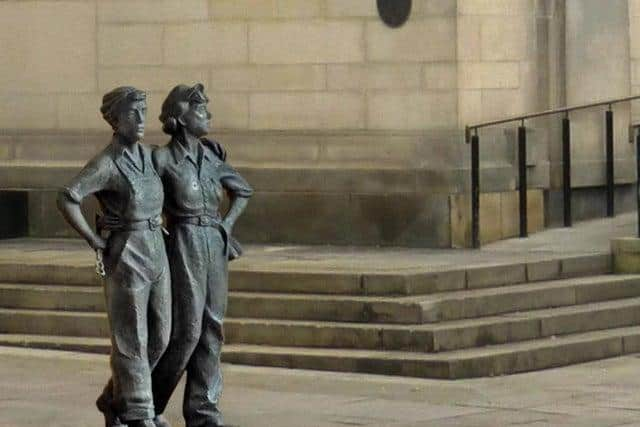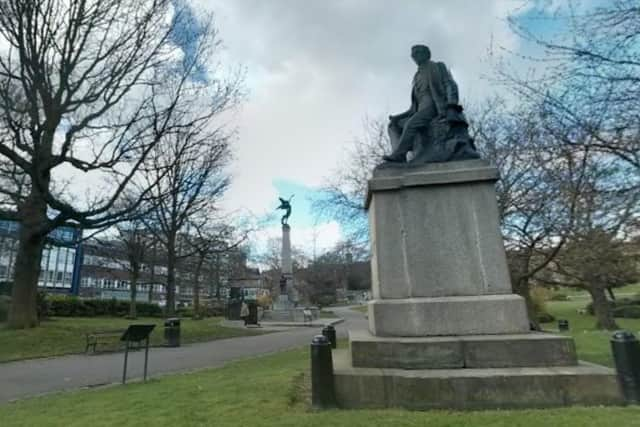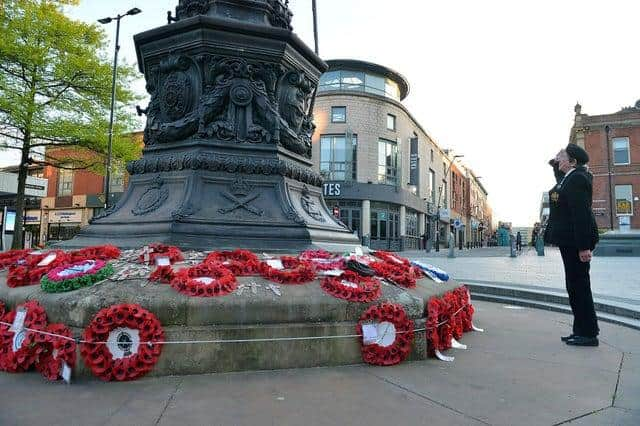This is who and what statues and monuments across Sheffield honour
and live on Freeview channel 276
Activists have launched a campaign, entitled ‘Topple the Racists’, which aims to remove all statues, memorials and titles across the UK that “celebrate racism and slavery”.
While the discourse surrounding which public monuments should be axed or allowed to stay shows no sign of slowing down, here is a list of some of Sheffield’s most iconic statues and the meaning behind them.
Women of Steel


Advertisement
Hide AdAdvertisement
Hide AdThe bronze sculpture that was erected in June 2016, which shows two women standing side by side, commemorates the women of Sheffield who worked to keep the steel industry going during World War One and Two. The Women of Steel statue was built after former steel workers, Kathleen Roberts, Kit Sollitt, Ruby Gascgoine and Dorothy Slingsby campaigned for the women in the area who left their families to start working when war broke out, to get the recognition they deserved. The statue was unveiled in Barker's Pool at a ceremony with around 100 women who'd worked in the city's steelworks during World War Two.
Ebenezer Elliott
The statue of 19th century poet, Ebenezer Elliott, who was born in Masbrough, Rotherham was officially unveiled in 1854. It was later moved to Weston Park in 1875. Elliott, who was also an iron and steel manufacturer, spoke out against the Corn Laws which were causing starvation among the working classes. He expressed criticisms of the tax on imported food and grain through his Corn Law Rhymes.
The Cholera Monument


The monument in Clay Wood pays tribute to those who lost their lives during the cholera epidemic in 1832. A total of 339 victims who died from the disease are buried in the grounds between Park Hill, Norfolk Park and next to Clay Wood. The Grade II listed Cholera Monument was erected in 1835 in between gardens, after treasurers from the Board of Health granted money for the monument to be built in the city.
Sheffield War Memorial
The Sheffield War Memorial which is more commonly known as the Cenotaph stands in Barker’s Pool in front of Sheffield City Hall. The memorial gives recognition for the lives lost during the world wars. The Grade II listed memorial features a 25 metre high flagpole that is painted white, with a gilded ball and crown. The memorial was built after the public donated £5,435 to fund the cost.
Teeming Statues


Advertisement
Hide AdAdvertisement
Hide AdThe statue of three men teeming steel – pouring molten metal from a ladle into a mould – is located at Meadowhall shopping centre. The Teeming Statues which were previously situated inside the building are now outside, near the entrance for shoppers to see. The monument pays tribute to Sheffield’s famous steel production past as it depicts three steel workers working together in hot, physically challenging conditions to create the material.